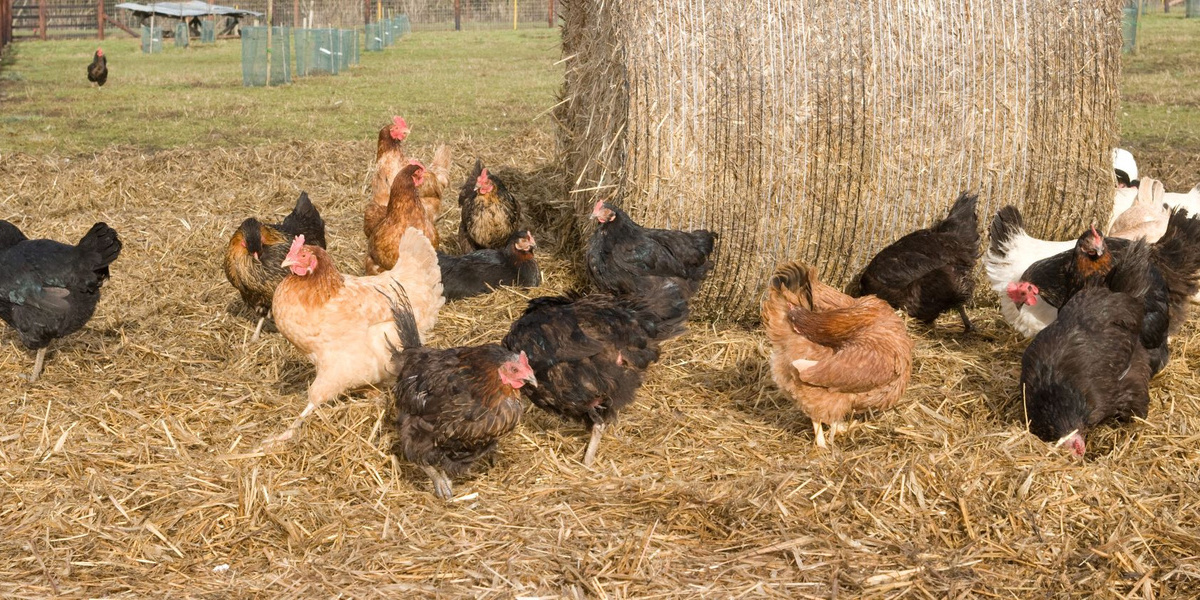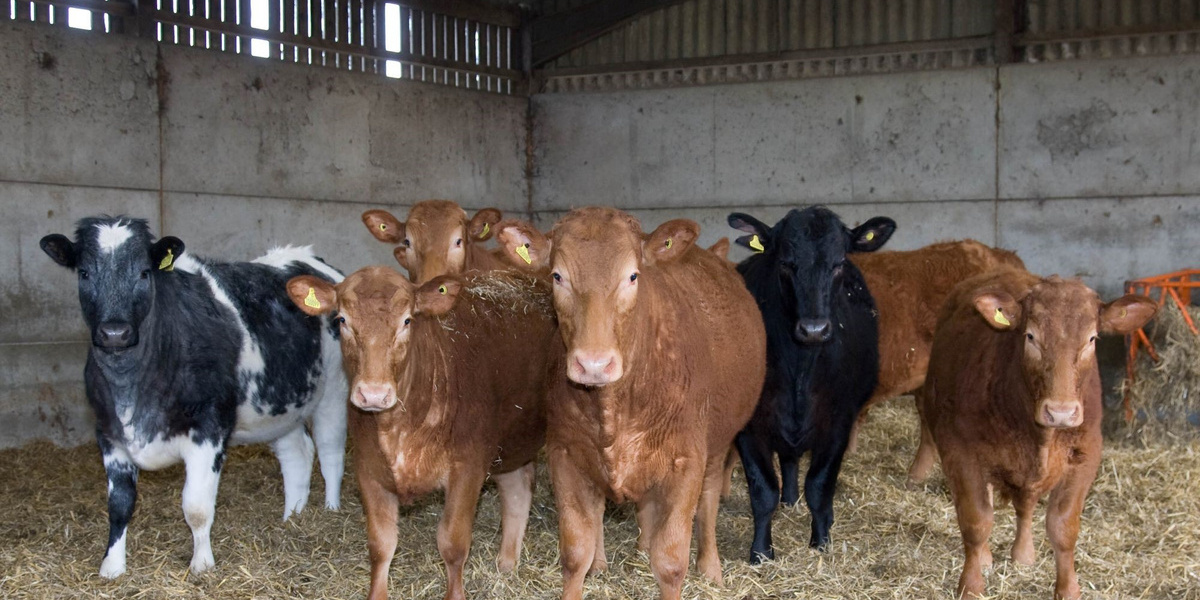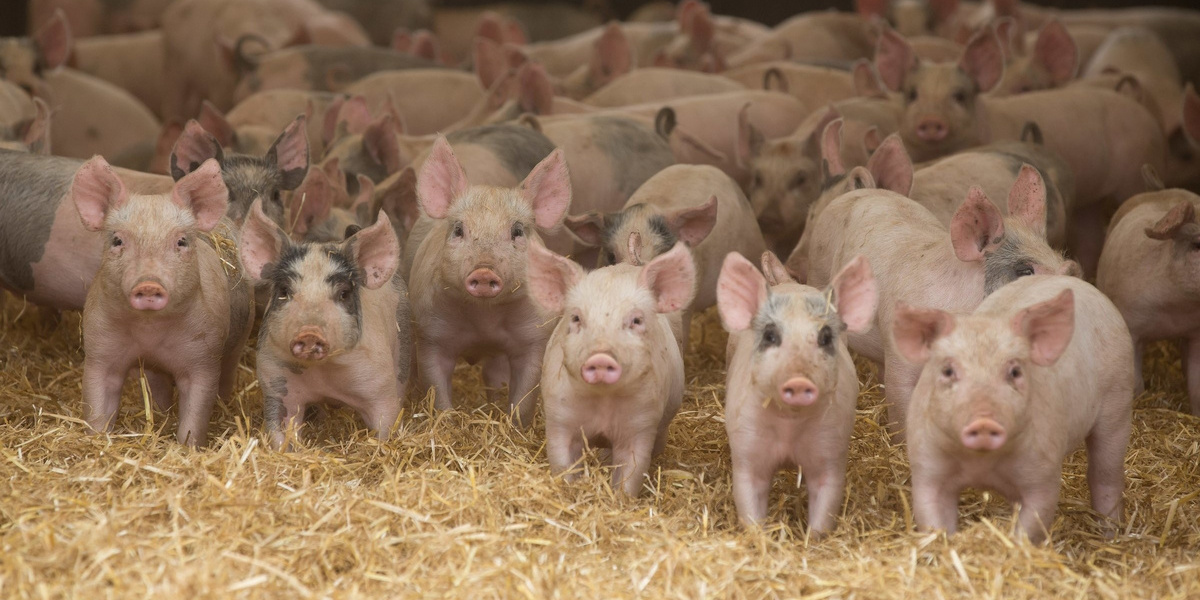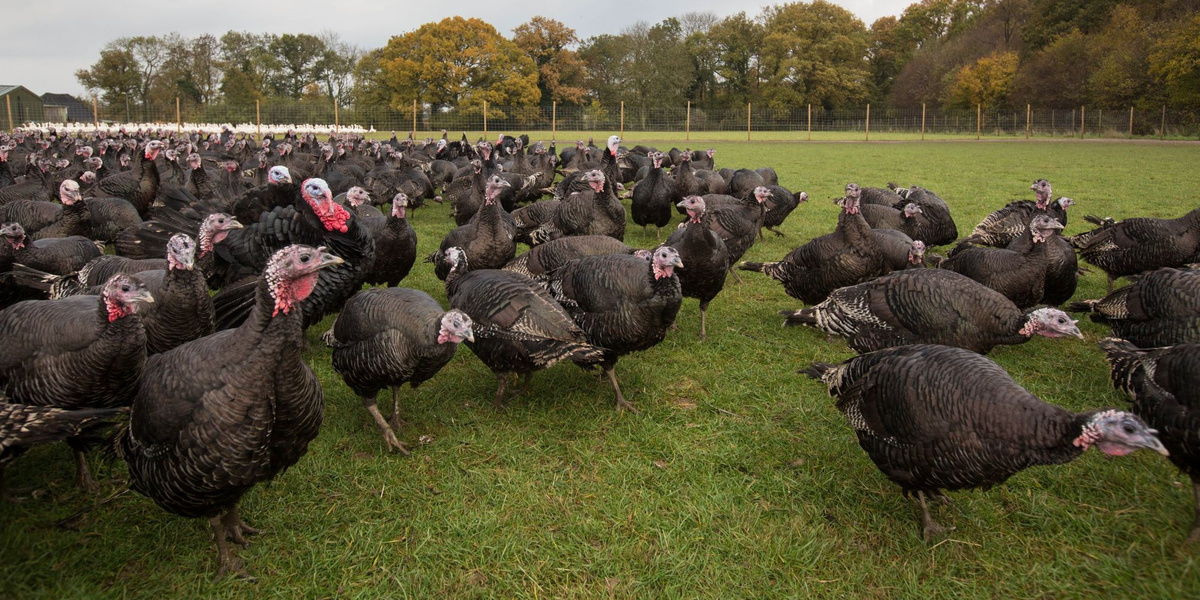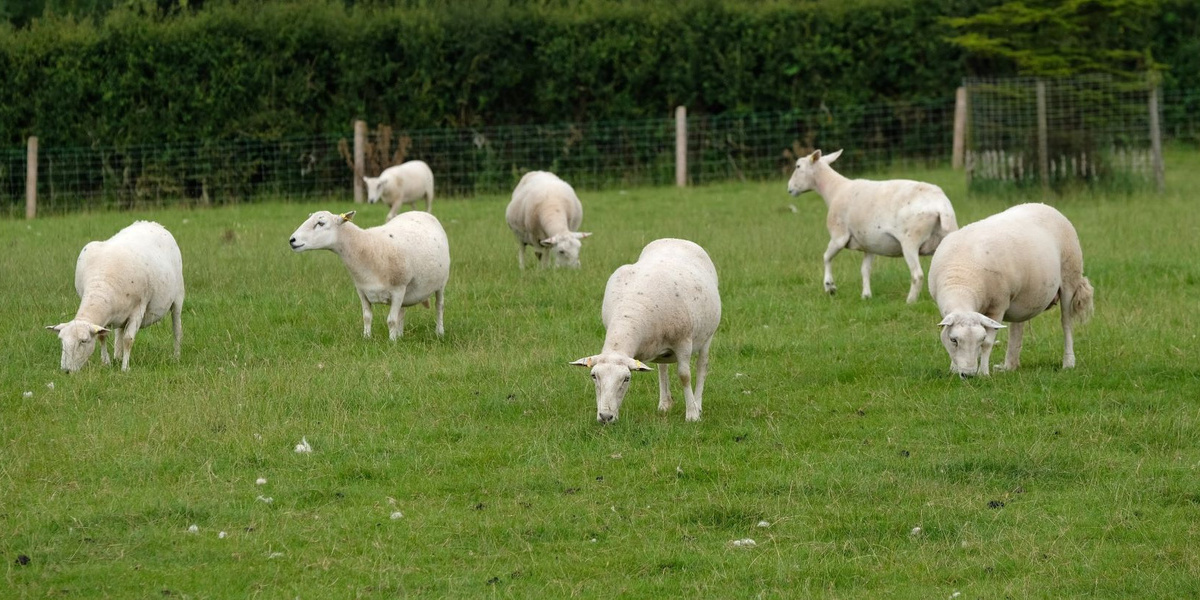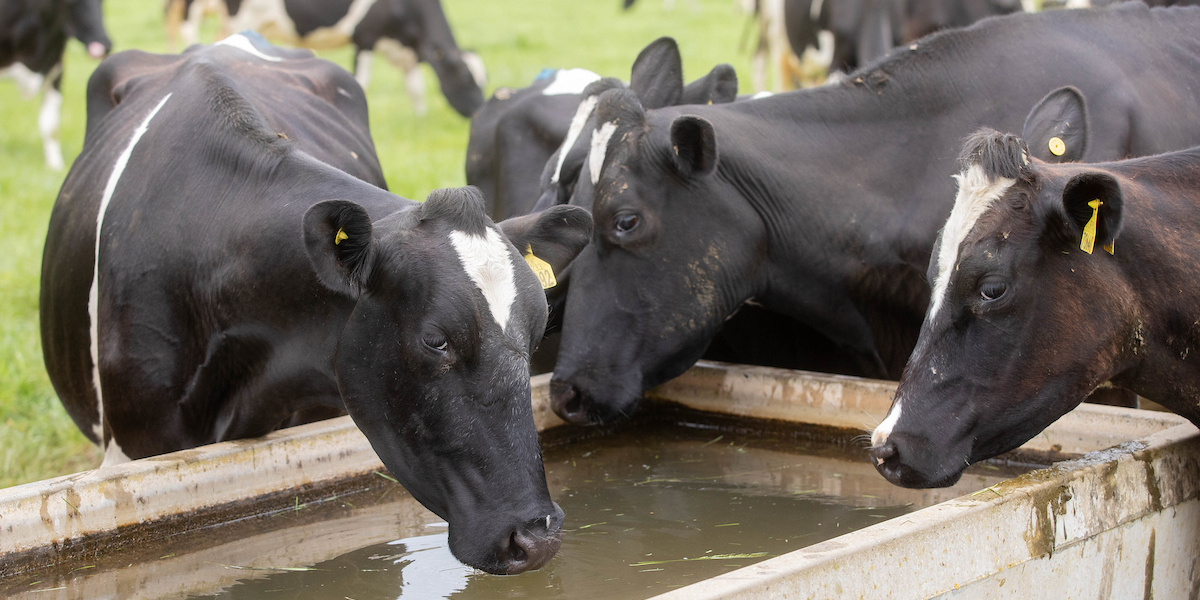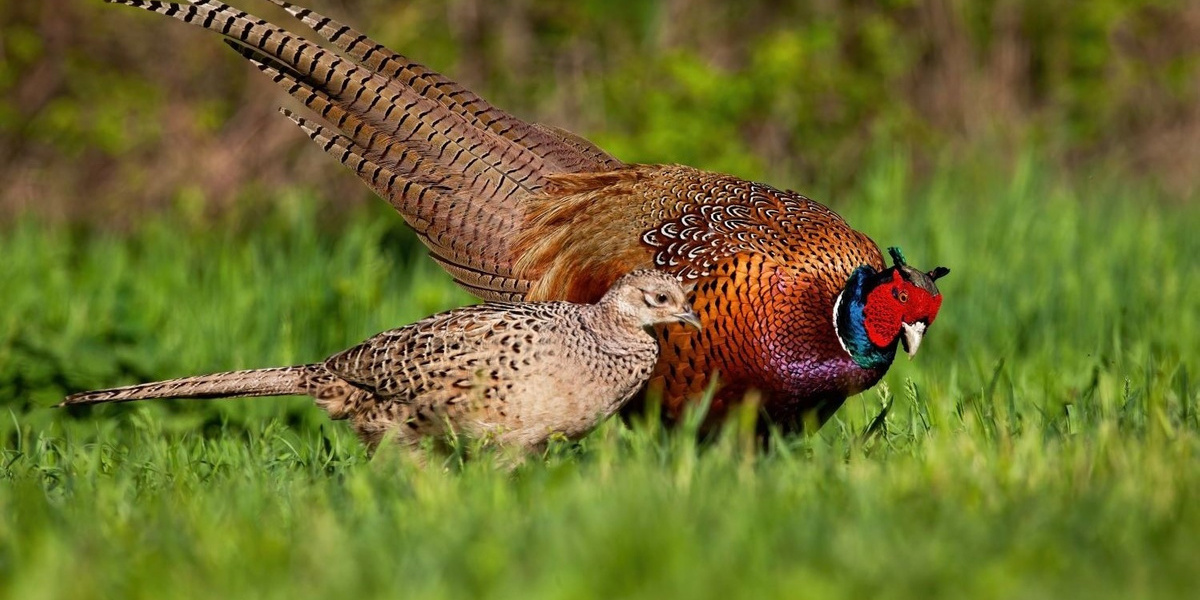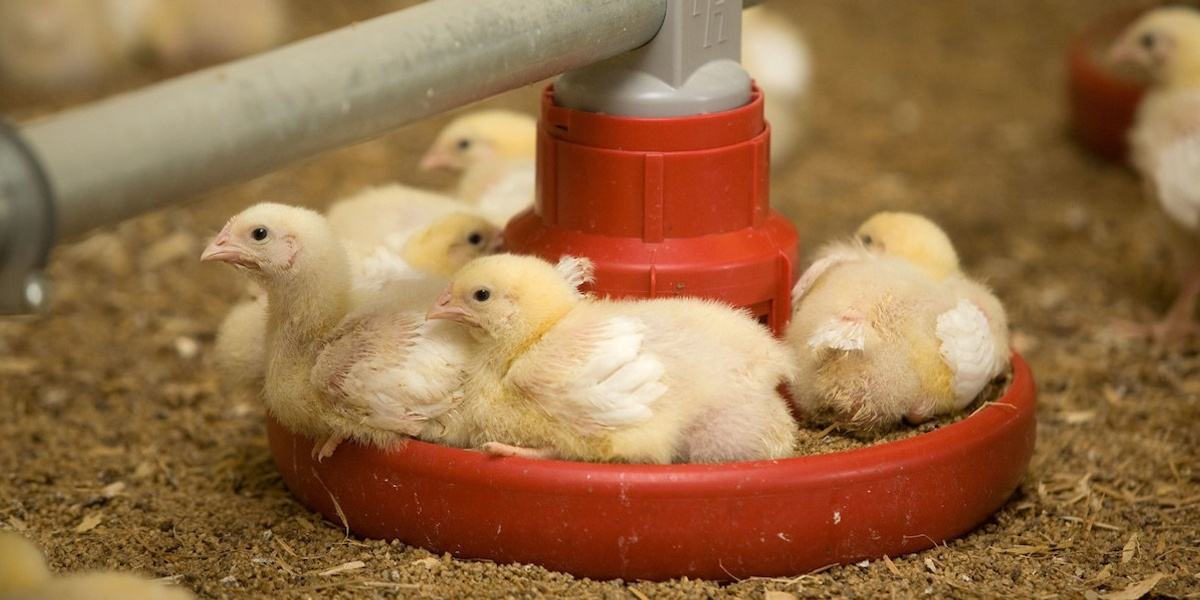AIC Code of Practice for Making Safe Deliveries of Animal Feed to Farms 2023
Purpose
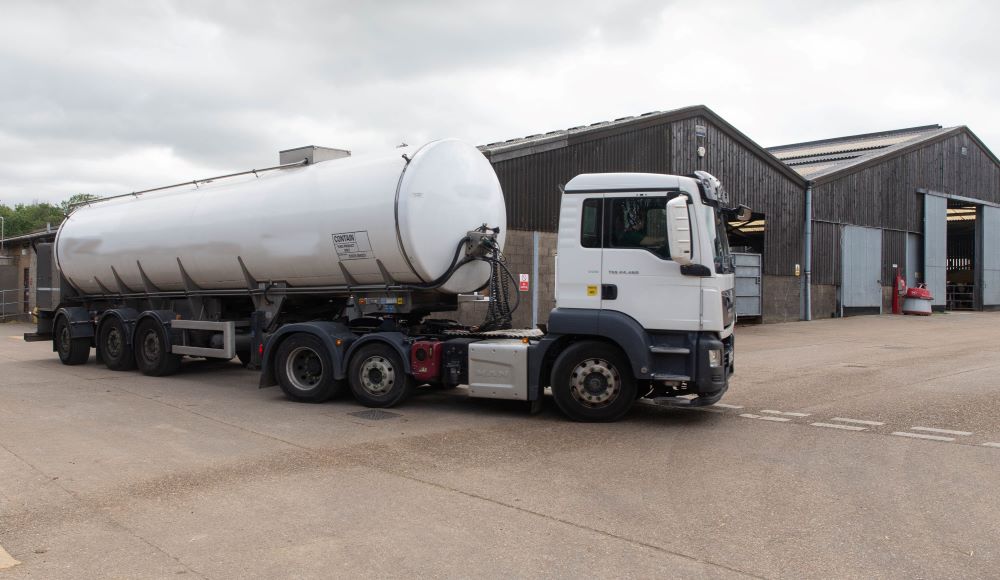
Publish date
24 01 2023
Author

David Moss
Project management and technical projects
The AIC Code of Practice, as endorsed by the Farm Safety Partnership, has been developed in support of a UK-wide feed industry initiative started in 2012 with the objective of securing significant improvements in the safety of delivery drivers who are working for, or on behalf of, animal feed companies.
The Farm Safety Partnership is a collaboration of organisations including NFU, NFU Mutual, HSE and CLA with a responsibility to show industry leadership by promoting safe systems of work within all sectors of agriculture.
The Code of Practice is designed to give generic advice to customers, feed manufacturers, and feed merchants, on safe deliveries to the farm and is primarily targeted at deliveries of animal feed products. However any delivery made to a farm customer’s premises should be planned to ensure that, following a risk assessment of the site, which includes consideration of the product being delivered, the vehicle to be used, and the manufacturers product safety information, a safe system of work is implemented to manage the delivery.
By implementing the requirements of this Code of Practice, the health and safety of delivery drivers, farmers, farm workers and members of the public can be greatly improved.
A copy of this code of practice can be printed or saved to your computer by right clicking anywhere on a white space selecting 'Print' from the drop down menu and choosing your destination as either your desired printer to print or choosing 'Save as a PDF' to download it as a PDF.
Scope
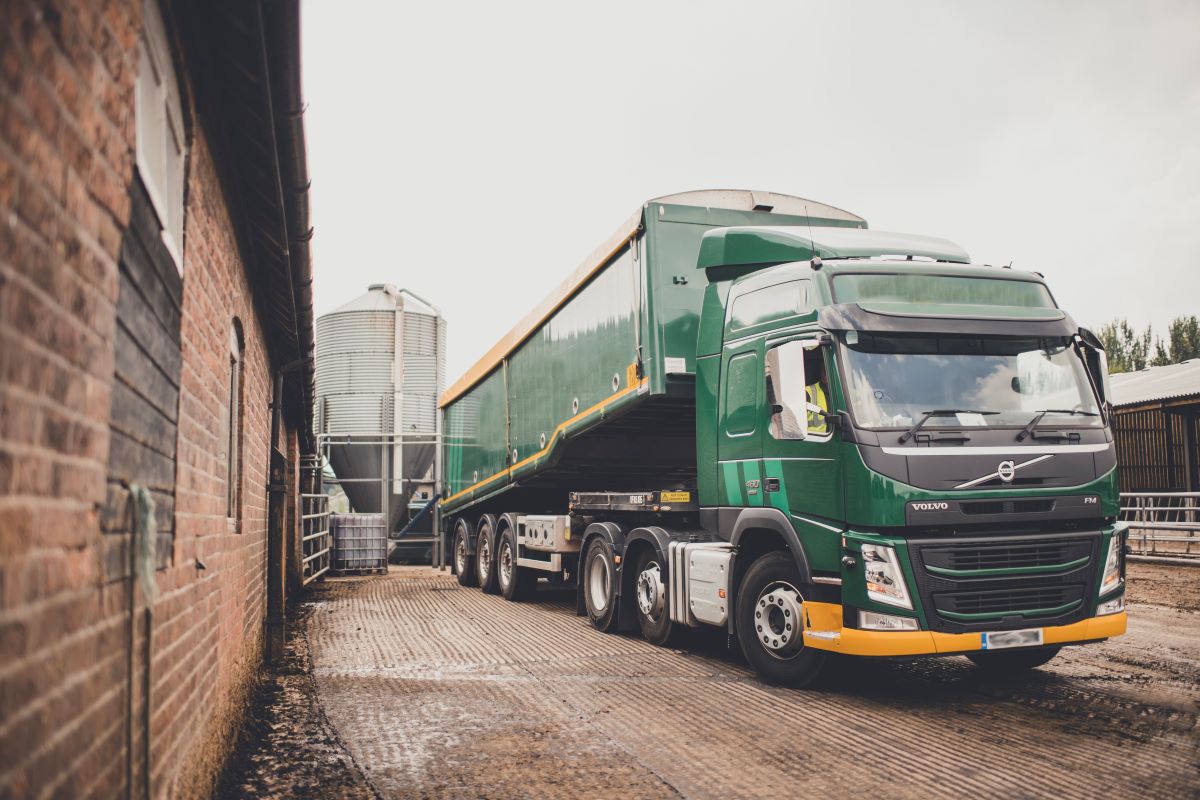
The following types of deliveries are covered by this Code of Practice:
Bulk Deliveries of Compound Feeds, Feed Materials, & Cereals
- Dry Products Tipped or Blown
- Moist Feed Products
- Liquid Products in Bulk
Packaged Deliveries of Compound Feeds, Feed Materials, & Cereals
- Dry Products e.g. in Bags, Buckets, or Intermediate bulk containers (IBC’s)
- Liquid Products in IBC’s or Buckets.
Introduction
The agricultural sector has the worst fatal accident rate of any major industrial sector. The UK animal feed industry is committed to playing their part in helping to reduce this unacceptable situation.
For some time the UK animal feed industry has had growing concerns about the safety of its employees when they are making deliveries to farm. With fewer people present on farms delivery drivers are often working alone making deliveries out of normal working hours in an environment where they are exposed to significant risks. In addition, there are considerable financial costs to customers and feed businesses as a result of accidents and incidents in the workplace.
Animal feed suppliers and their customers have a shared responsibility for compliance with the Health and Safety at Work etc Act 1974 and other relevant health and safety legislation. This Code of Practice aims to help parties comply with their legal duties by specifically looking at ways to help ensure the safe delivery of animal feed products to farms and offers guidance to help manage the farm delivery process.
This Code of Practice also has the endorsement of the Farm Safety Partnership. Members of this partnership include AIC, NFU, CLA, TFA, & NFU Mutual.
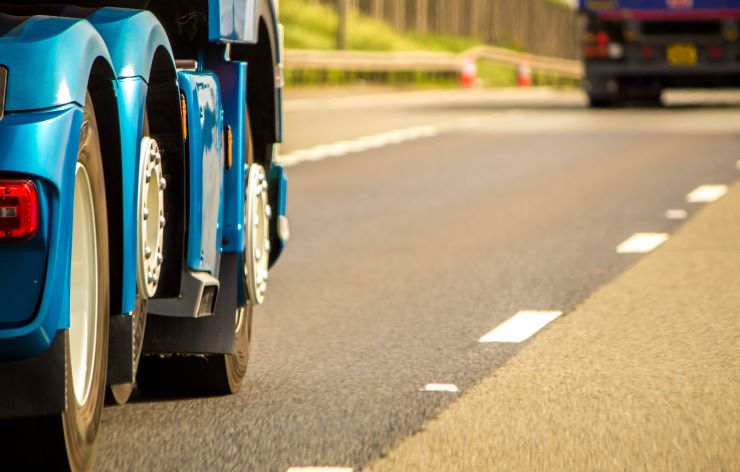
Benefits of complying with this Code of Practice include:
- Helping to safeguard the health and safety of feed delivery drivers (employees and appointed contractors).
- Helping to safeguard the health and safety of other people on the customer’s premises (including farmers, farm workers and members of the public).
- Reduce the risk of an accident that might significantly damage the reputation of those businesses concerned.
- Demonstrate a commitment towards improving the management of health and safety on farms
- Supporting the Farm Safety Partnership in promoting health and safety on farms
1 - Planning for Feed Product Deliveries
Introduction
Prior to any delivery being made to farm premises it is important that both supplier and customers exchange key information to ensure that the proposed delivery is made safely and efficiently. This should include the following:
- Yard (Including lighting, space to turn, hygiene, livestock, and pedestrians).
- Storage facilities (including discharge points including capacity of bins).
- Delivery operations (Including headroom, overhead power lines, buildings, manual handling, use of forklifts, etc).
- Vehicle movements (including access restrictions, size and weight of delivery vehicle).
- Drivers - (designated delivery times and availability of assistance to drivers).
- Any other hazards which visitors to the customers premises may be exposed to and the steps which should be taken to avoid injury.
- Compliance with Biosecurity requirements.
These requirements are covered in more detail in Sections 2 to 6 of the Code of Practice.
Regular dialogue between the Feed Manufacturer/ Merchant and their customers including feedback from their own and their appointed contractor LGV drivers is essential to ensuring that the point of delivery information is kept up to date.
2 – Basic Requirements Applying to any delivery
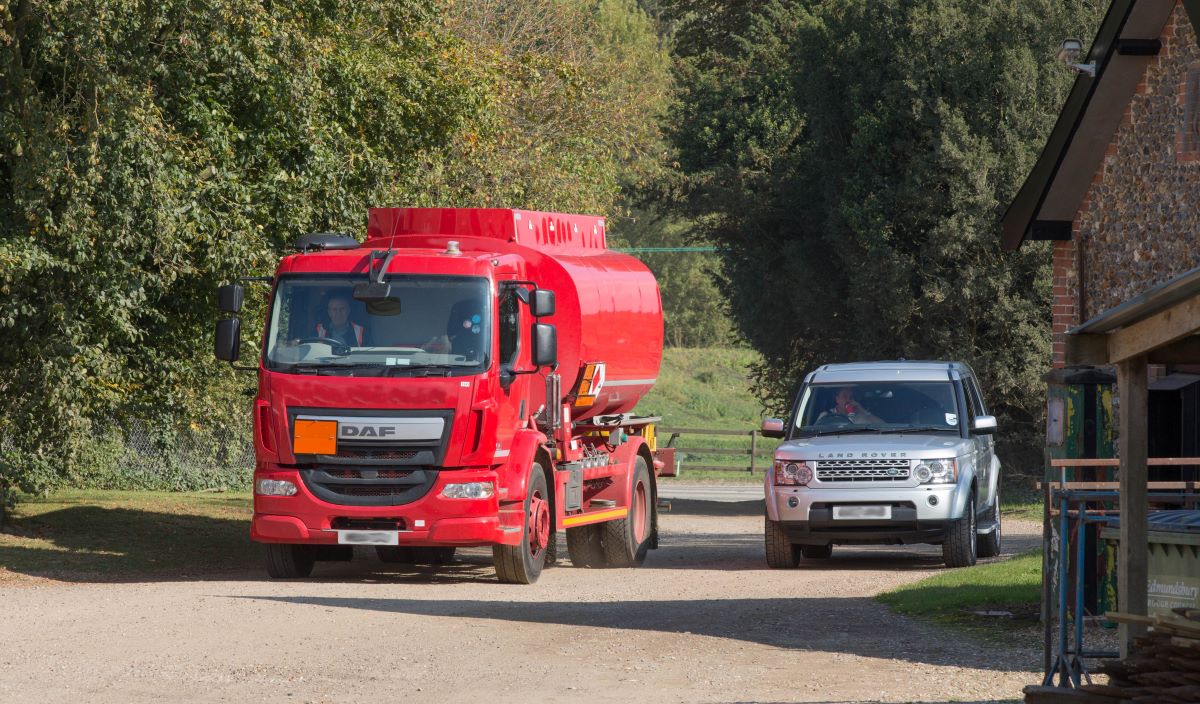
2.1 Site Access
In order to make a safe delivery to farm there must be an adequate and safe means of access from the public highway. Vehicles should be off the public road. Making deliveries from a vehicle parked on a public road should be avoided wherever possible. Where this is not possible, drivers must follow safety protocols to warn other drivers such as using hazards lights and cones and/or advance warning signs/triangles.
The farm itself and associated access roads to the farm should be clearly identified from the roadside and where there are two or more access points to the farm it should be clear which one is intended for feed deliveries. Any access routes that are not suitable must also be clearly identified to avoid damage to domestic driveways and gardens and putting pedestrians at risk from moving vehicles.
On arrival at the premises drivers must comply with all signed instructions including indicated speed limits, and one way systems.
The access road needs to be wide enough to safely accommodate the agreed delivery vehicle, including its door mirrors up to 3.0 metres wide. The road must be clear of overhanging obstructions such as trees and branches.
The access road must be capable of taking the weight of the proposed delivery vehicle when fully loaded including when there are adverse weather conditions. A fully loaded articulated vehicle can weigh up to 44 tonnes.
Roads should be of sound construction and properly maintained. Deep potholes and ruts are unacceptable as they can cause significant damage to vehicles.
Where the access road leaves the farm the driver must have clear vision in both directions in order to be able to pull out safely on to the public highway. Where this is not possible, assistance may be required to ensure the vehicle can exit the site safely.
Vehicles should not be unloaded at the roadside as this would require the driver to work in the path of other road users. If unloading at the roadside is unavoidable, then this should only be done with appropriate control measures in place.
2.2 Space to Turn
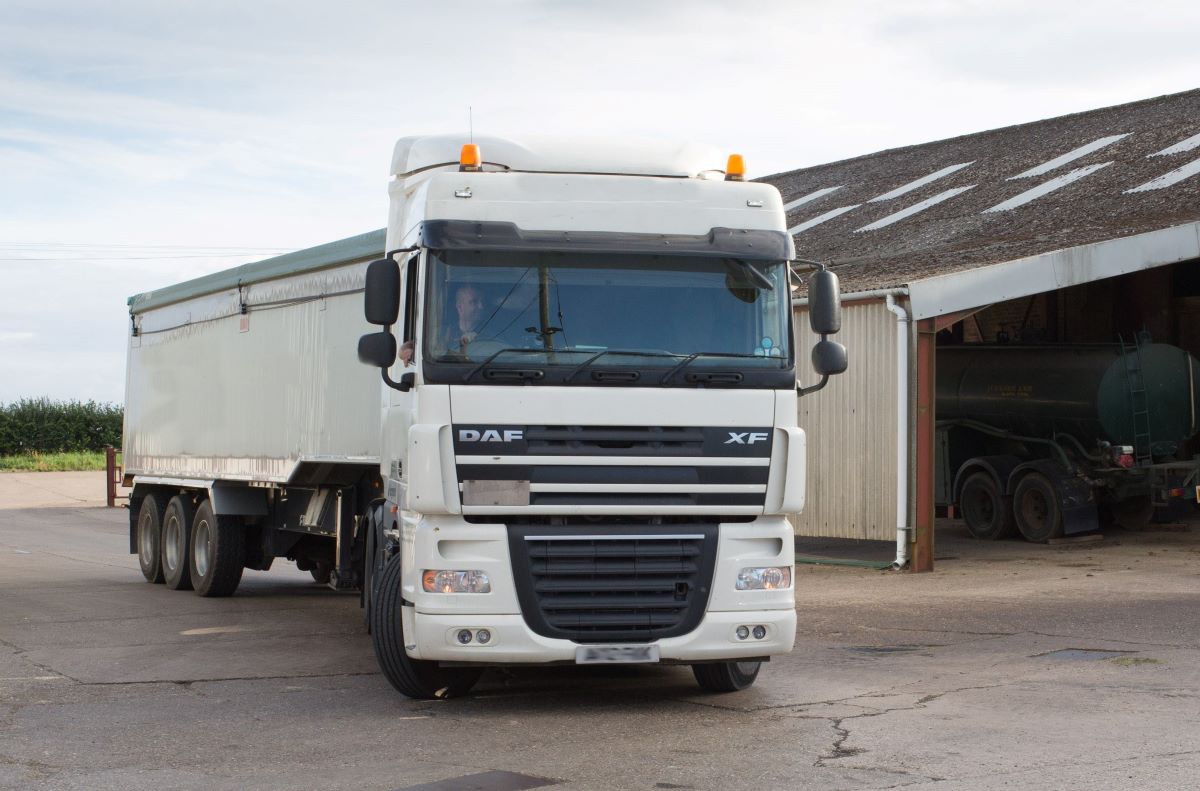
The vast majority of damage to buildings and vehicles occurs when there is insufficient space to turn around, for example when machinery or materials have been left in a yard or roadway.
Customers must provide adequate space for vehicles to turn around safely whilst on the farm site. Vehicle routes in and around the delivery site should be designed to reduce the need for reversing by adding turning circles, or using one-way systems. Where this is not possible the vehicle should enter the site by reversing to enable it to leave the site in a forward direction where it is safe to do so and does not contravene road traffic legislation. For more information on reversing, see section 2.9.
Typically a 4 wheeled vehicle requires a turning circle of 7.4 metres, a 6 wheeled vehicle requires a turning circle of 7.9 metres, and an 8 wheeled vehicle requires a turning circle of 9.5 metres whilst an articulated vehicle requires a turning circle of between 15 metres and 18 metres.
Mirrors in the farm yard or on buildings can help drivers manoeuvre safely.
2.3 Headroom
A bulk tipper or blower will be about 4 metres tall, a bulk liquid tanker will be about 3.5 metres tall and a bag delivery vehicle could be up to 4.5 metres tall. This is an important consideration if a vehicle is required to enter a shed or lean-to building to discharge a load. It is good practice for drivers to seek assistance from farm staff before proceeding.
2.4 Site Conditions
Drivers should not be routinely exposed to substances which could put their health at risk, these include dust, chemicals, and slurry or manure which may contain harmful pathogens. Additionally, livestock must be kept secure with any buildings which may contain them clearly marked.
The route to the delivery point and the area immediately surrounding it must be free from excessive slurry, manure and waste water, and livestock.
Suitable washing facilities must be available on site to enable drivers to remove any personal contamination.
Any customer specific biosecurity requirements must be communicated to the driver and adequate facilities made available to the driver to implement in a safe manner.
2.5 Storage Facilities
The storage facilities for the product be it bulk or bags, liquid or solid, must have sufficient capacity for the quantity being delivered and be clearly identified to avoid the product being discharged into the wrong container or space.
The storage facility should be properly maintained to ensure that its safety is not compromised in any way.
Ideally the bin/tank/trailer should be adequately protected by suitable barriers, stop blocks or kerbs to prevent accidental damage to the vehicle, spillage of product into the environment, or damage to the storage facility itself.
Where the access route to the storage area requires a delivery vehicle to pass in close proximity to an LPG tank, the tank must be protected against vehicle damage by the installation of an appropriate barrier.
2.6 Good Lighting
Feed delivery drivers operate on a 24/7 basis so there may be insufficient natural light to work safely, particularly during the winter months.
Customers must provide adequate lighting throughout the areas of the farm including yards, turning areas, around the delivery point, and any access routes along which the driver is required to walk whilst making the delivery
Vehicles must be equipped with adequate working lights and drivers should be issued with torches or head lamps.
Tractors, fork lift trucks and other farm machines may be operating in yards and around buildings. Wearing high visibility clothing should help make delivery drivers easier to see and reduce the risk of them being struck by a moving vehicle.
2.7 Discharge Point
The discharge point must be clearly identified using stickers or signs. Alternatively, a clear description of the discharge point must be obtained from the customer when the order is placed and passed to the driver with the delivery instructions.
The discharge point must be clear of debris, tractors and other farm machinery and easily accessible by the driver. Delivery drivers must not move customer’s equipment unless they have received the correct formal training and authorisation for the specific equipment being used, and undertake the appropriate pre-use inspection. The driver will need to seek help from the customer to move any item of equipment obstructing the delivery point before discharging the load.
The driver must not be required to climb over, or stoop below, obstructions greater than waist height, or to have to reach above shoulder height to access the discharge point.
2.8 Livestock
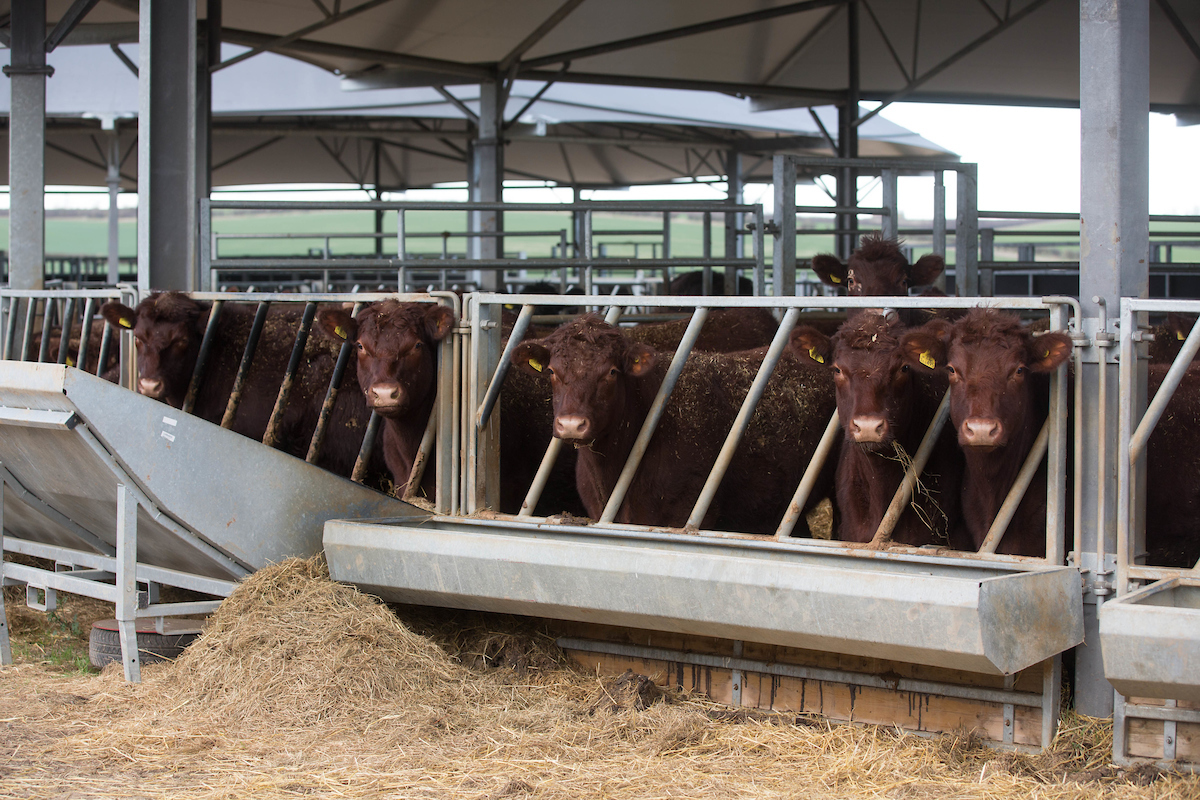
Farm livestock must not obstruct access to the delivery point. Livestock must be kept secure at all times and it must not be necessary for a driver to enter any livestock pen or building housing livestock to access the delivery point.
2.9 Pedestrians
The risks associated with feed delivery vehicles operating near pedestrians, e.g. farm workers, members of the public and children need to be adequately assessed and controlled.
Vehicle and pedestrian routes must be segregated wherever possible. Drivers must take care when reversing to ensure that pedestrians are not put at risk. If a banksman is used to guide a reversing vehicle the banksman must stand in a safe position where the driver can see him/her at all times. A system of communication must be established between the driver and the banksman and understood.
Reversing aids such as mirrors must be kept clean and properly adjusted. Consideration should be given to the use of vehicle reversing cameras/CCTV systems.
Suitable warning signs need to be in place, particularly where farms are used for leisure activities or where public footpaths cross, or are close to either the delivery vehicle itself, or the route the delivery vehicle takes to access the delivery point. Warning signs should be displayed to alert pedestrians that vehicles may be present.
Children must be kept clear of the delivery point – it is particularly important that this is effectively enforced during school holidays, week-ends, and on farms providing holiday accommodation or other recreational facilities.
2.10 Overhead Electricity Power Lines (OHPL)

The body of any vehicle delivering to a farm is at risk of coming into contact with any Overhead Electricity Power Lines.
Planning for OHPL
It is often difficult to identify the type of overhead cable (electricity or telephone). Feed supply companies should therefore establish at the delivery planning stage if there are any OHPLs which the vehicle could come into contact with, and should ensure that their driver is made aware of this before he arrives.
Customers must review the location of any OHPL on the farm and wherever practical establish vehicle routes which avoid the need to operate near OHPLs. Where this is not possible, customers must ensure that OHPLs are clearly marked and should draw their presence to the attention of the driver on arrival (or by providing information to the feed supply company).
Customers must be encouraged to locate any new bins, tanks, or silos away from OHPL to further help reduce the risk of a delivery vehicle coming into contact with an OHPL.
Operating safely near OHPL
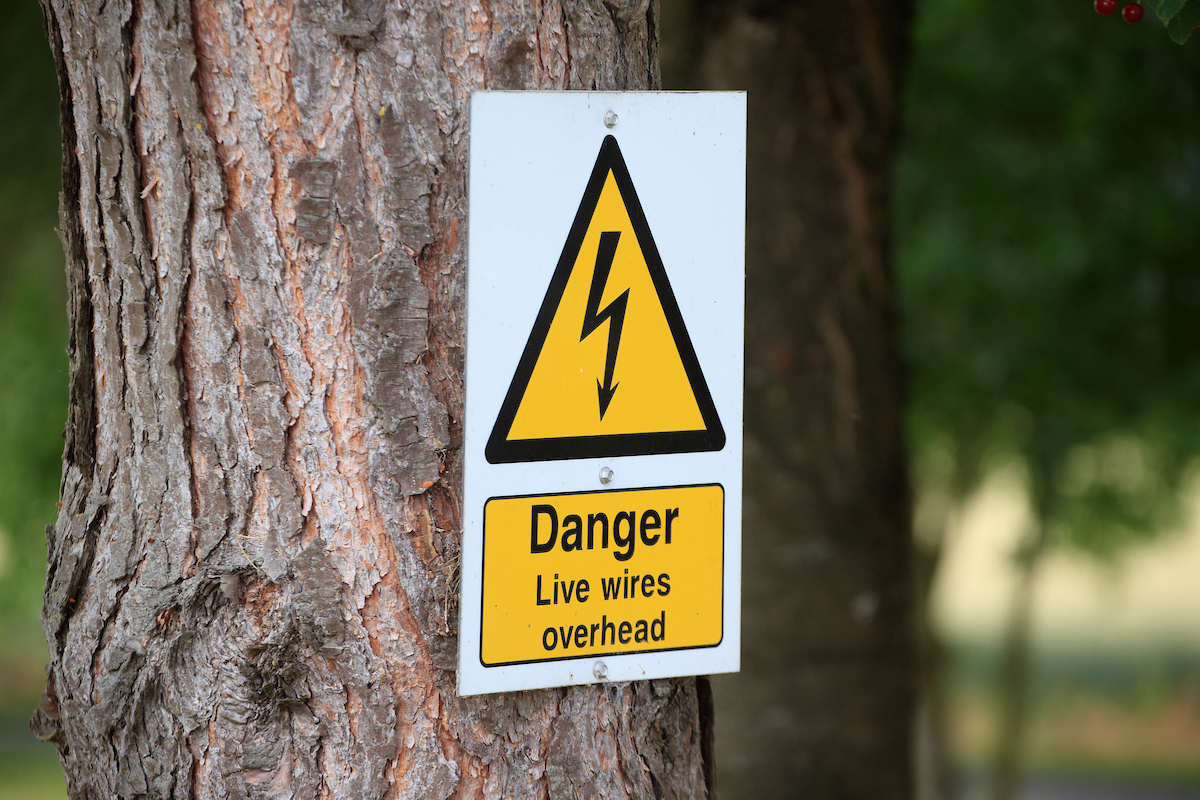
The body of a tipper vehicle must not be operated where it may come into contact with an OHPL especially where the cable is directly above the delivery point. Care must also be taken to ensure that the body of a high sided bag vehicle does not come into contact with OHPL when moving around the farm.
Risk of contact with OHPLs can be significantly reduced if a safe horizontal distance of at least 10 metres is maintained between the vehicle and the OHPL during the delivery operation (Safe zone). Steps must always be taken to maintain this safe working distance e.g. parking in an alternative location and/or using additional pipes.
Where it is not possible to avoid working within 10m of OHPLs (Controlled zone), an assessment of the risks must be carried out and additional control measures taken which allow the delivery to be made safely. In practice, this ‘dynamic’ risk assessment will normally be carried out by the driver on arrival and will be in addition to any previous assessments included on the delivery instructions. Drivers must record any additional control measures to be taken so that they can be included on the delivery instructions for next time.
The Electricity Networks Association publishes guidance on working safely near overhead cables. This guidance establishes an exclusion zone around overhead power lines within which the risk of injury or incident is known to be very high. Deliveries in tipper/blower trucks should not be made within the exclusion zone, either directly beneath an overhead power line or adjacent to it.
The exclusion zone distance varies with the voltage of the cable but for a 11,000v cable on wooden poles, most commonly found on farms, this distance is 3m. For further information, please refer to the Electricity Networks Association publication ‘Look out, look up!’.
Drivers must be made aware of the risks and control measures involved when working near OHPL. They must also be made aware of the actions to be taken in the event of their vehicle coming into contact with an OHPL.
Further guidance on safe working near OHPLs is available from HSE, the Electricity Networks Association (ENA) and from Distribution Network Operators – see section 7.
2.11 Driver’s On Site Risk Assessment
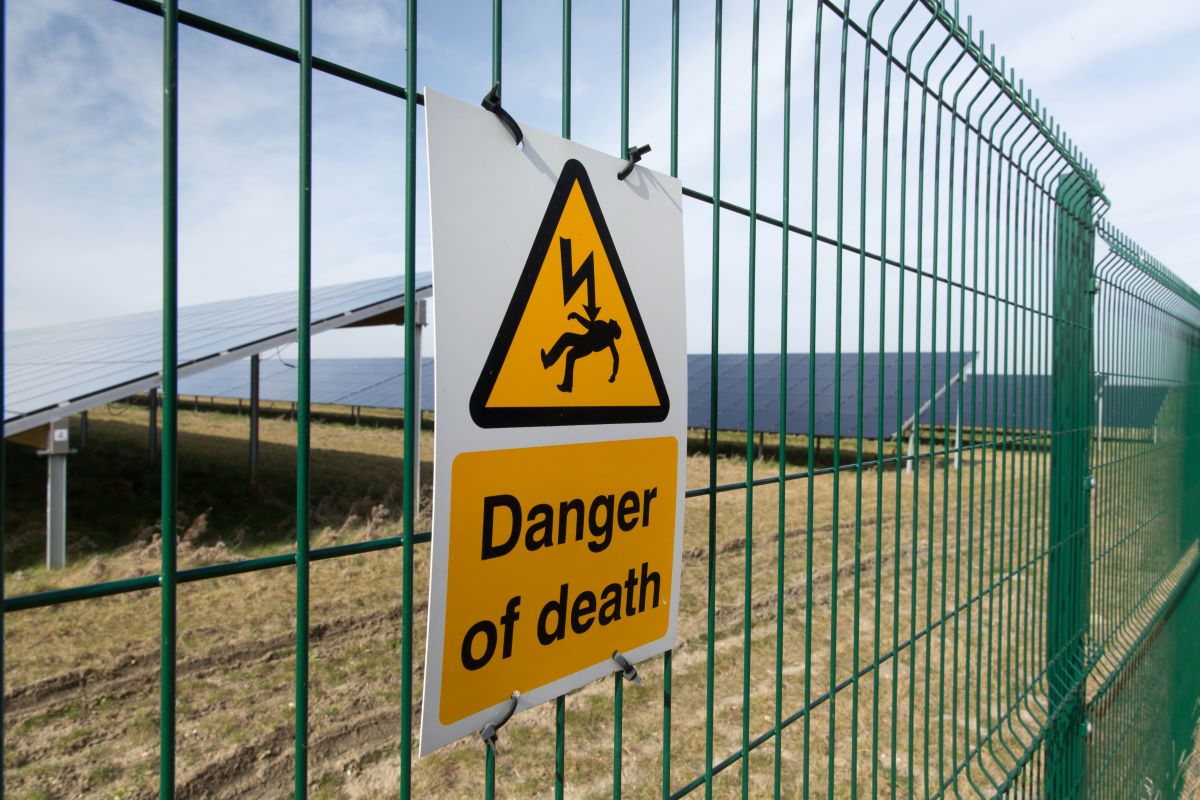
On arrival at the delivery point and prior to commencing the delivery, the driver must carry out their own ‘on the spot’ risk assessment as site conditions may have changed. In the event that a driver identifies a hazard which presents a risk to their safety (or anyone else’s) and if that risk cannot be reduced to an acceptable level by taking control measures, then the driver will seek assistance from either his employer or the customer or both in order to agree further measures to control the risk. If the risk cannot be reduced to an acceptable level, then the driver will not proceed with the delivery.
3 - All Bulk Deliveries
The following requirements apply to all bulk deliveries of animal feed products;
3.1 Firm Level Ground
Raising the body of the loaded vehicle when parked on sloping or uneven ground may result in a vehicle overturn, causing significant damage to buildings, damage to the vehicle and possible serious injury to, or even death of, the driver. Road surfaces around the delivery point must be level and firm. Additional protection from vehicle overturn can be achieved through the use of vehicle inclinometers and stability systems or similar technology.
Comprehensive testing carried out by vehicle engineers in 2011 found that a fully loaded 44t Articulated vehicle, when tipped to it maximum extent would only sustain a slope of 2 ½ degrees across the vehicle before it became unstable and started to overturn.
Access routes used by the driver must also be level and firm to minimise the risks of slips and trips during the delivery.
3.2 Overhead Obstructions - Overhead Electricity Power Lines & Buildings
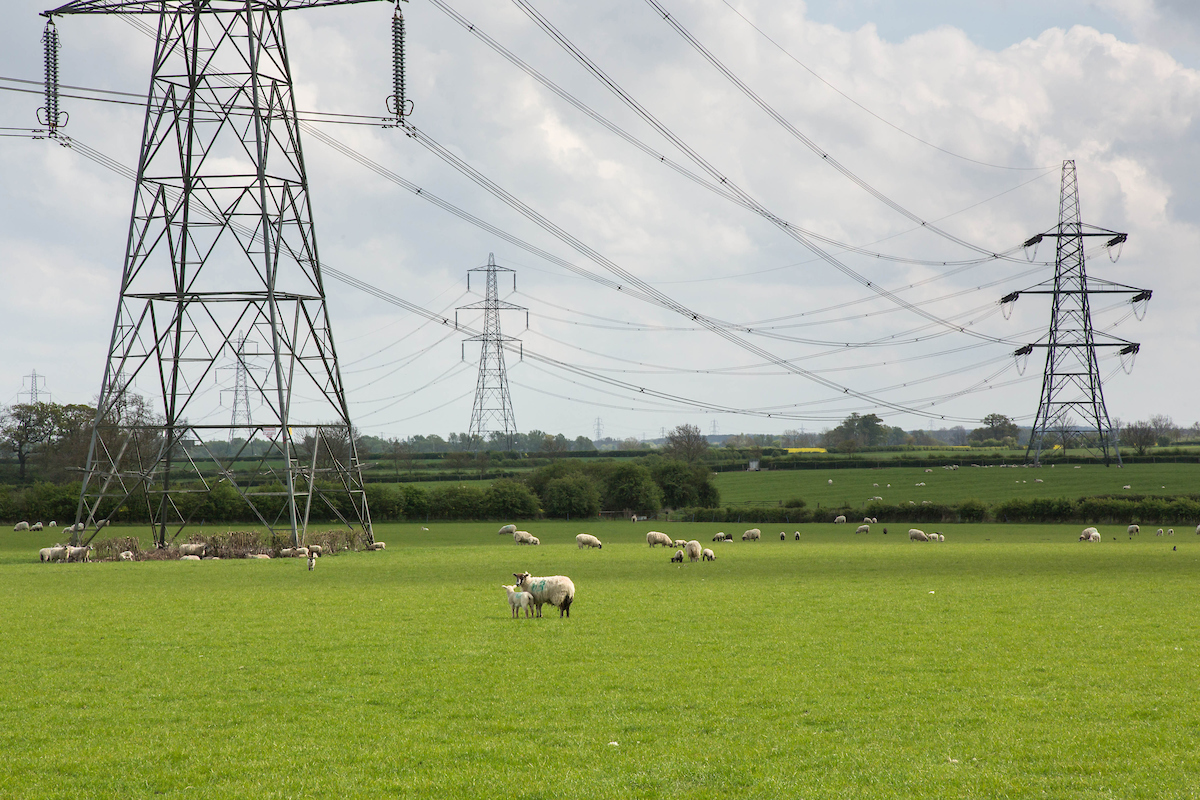
The body of bulk tipping vehicle will be raised during delivery in order to discharge the product. The area surrounding the delivery point must therefore be free from overhead obstructions, particularly overhead electricity power lines (OHPL) and roof structures:
3.3 Overhead Electricity Power Lines (OHPL)
Detailed guidance on OHPL can be found in Section 2.10
3.4 Buildings
When tipping inside buildings, the clearance between the roof and the raised body of the vehicle must be sufficient to allow the feed to be discharged safely without the risk of a roof strike. Be aware that some delivery vehicles may be fitted with air suspension systems that will allow the body of the vehicle or trailer to rise as the load is discharged, thereby increasing the overall height.
3.5 Approaching the Rear of the Vehicle whilst Tipping
Pedestrians (including farm staff and drivers) must remain at a safe distance away from the rear of the vehicle/trailer when the body is raised. A sudden release of material whilst discharging through the rear door may result in the individual being buried and possible suffocation, or being struck by the rear door.
Vehicle/trailer rear doors can fail or spring open without warning as a result of component failure. Anyone stood behind the door is at risk of a serious injury should this occur.
No one should put themselves at risk by reaching under a raised tipping body or trailer (e.g. to clean away any spilled feed) as there is a risk of being crushed should the trailer body descend.
4 - Bulk Blown Deliveries
In addition to the precautions listed above for tipped deliveries, the following safety requirements specifically relate to bulk blown deliveries:
4.1 Fixed Delivery Pipe
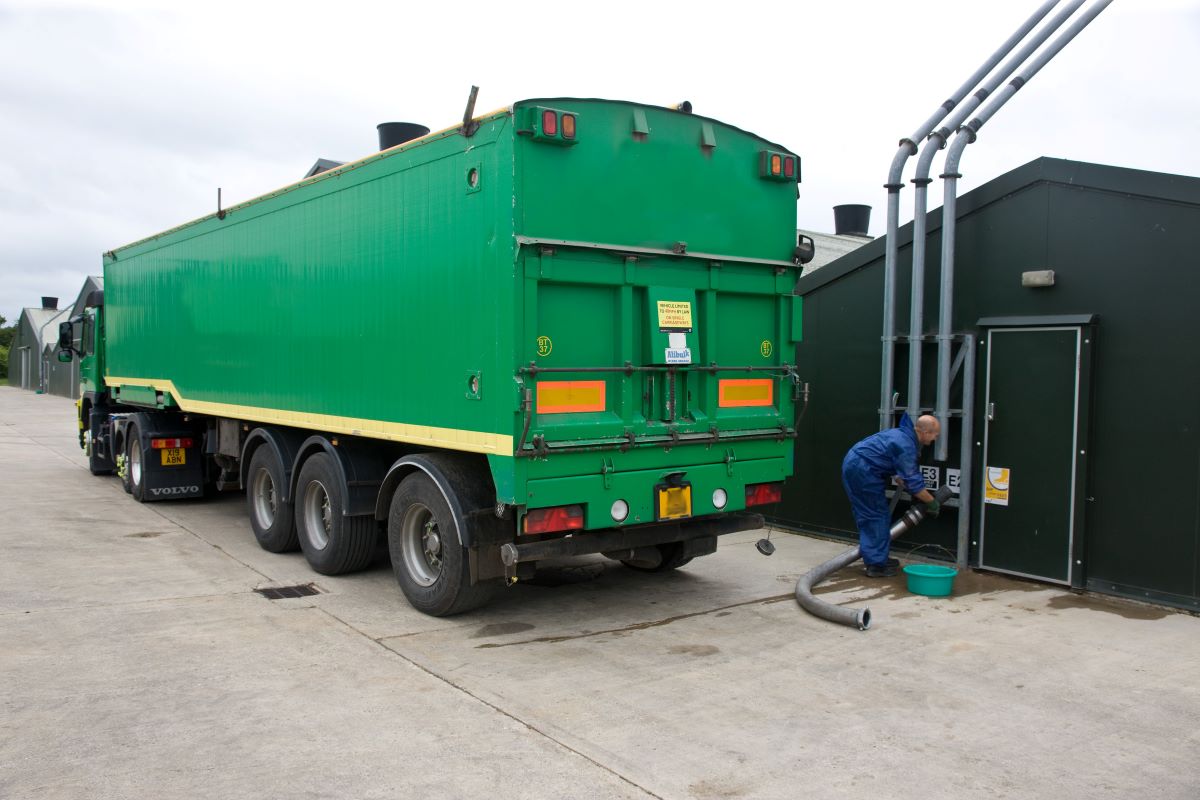
A fixed delivery pipe must be provided to which the vehicle discharge pipe can be connected. In order to avoid the risk of muscular/skeletal injury from stooping or reaching, the fixed pipe must be located between waist and head height (0.5 to 1.5m). Under certain circumstances, it may be necessary for the feed supplier to provide additional lengths of pipe and fixings in order to enable the driver to complete the delivery safely.
4.2 Feed storage facility
The feed bin/trailer/storage area must have sufficient capacity to receive the quantity of feed which has been ordered.
Feed bins must be free from damage and/or corrosion which may affect the safety of the bin and which presents a risk of injury. This includes being securely fixed to ground or other permanent structure to prevent collapse/overturn.
If an industrial container is used to store feed it must be adequately vented to avoid dangerous build up of air pressure during discharge of the product, which could result in the doors of the container failing and being blown off the container injuring anyone in the immediate vicinity.
Farm trailers which are used to receive the delivery must be parked on level ground and securely hitched to a tractor, with the brakes applied, to both tractor and trailer.
If the trailer is not hitched to a tractor it must be attached to a secured ground point.
Trailers must be in the lowered position during delivery.
Trailers must be fitted with a fixed delivery pipe or alternatively a coupling must be used to fix the pipe over the side of the trailer. Either way, the driver must be able to connect the vehicle pipe from ground level.
Drivers should not be required to climb up or over trailers to sheet or un-sheet them before, during or after delivery, if this is necessary then a safe system of work must be used.
Where autosheeting sytems are fitted, drivers should not be required to climb up or over trailers to sheet or unsheet them before, during or after delivery. If this is necessary then a safe system of work must be used.
Where the feed is to be blown into tote bags or boxes on farm, a fixed delivery pipe must be provided.
Tote bags must be filled using suitable equipment which avoids the need for the driver or customer to hold the delivery pipe when filling it.
4.3 Feed lofts
Access to feed lofts should be avoided wherever possible as they may present hazards such as access at height, confined spaces, dust and unguarded edges.
Fixed delivery pipes must be provided by the customer, both at the connection point, and within the loft. Under certain circumstances, it may be necessary for the feed supplier to provide additional lengths of pipe and fixings in order to enable the driver to complete the delivery safely.
If access to the loft is unavoidable, then ladders or steps must be in a good state of repair, placed on a firm footing and must be secured at the top. Staircases used to access lofts must be in good condition, free of obstructions, and if outdoors, kept free of water or other material which may render them slippery. Staircases will require guard rails or other suitable barriers to prevent falls.
Loft floors must be sound and capable of taking the weight of the feed to be delivered. Interiors must be well lit if entry is required and access routes within the loft free of all obstructions.
During a bulk blown delivery, the driver must remain in a safe place in close proximity to the delivery point and be able to promptly access the controls of the vehicle if required.
5 - Bulk Liquid Deliveries
5-BULK LIQUID DELIVERIES
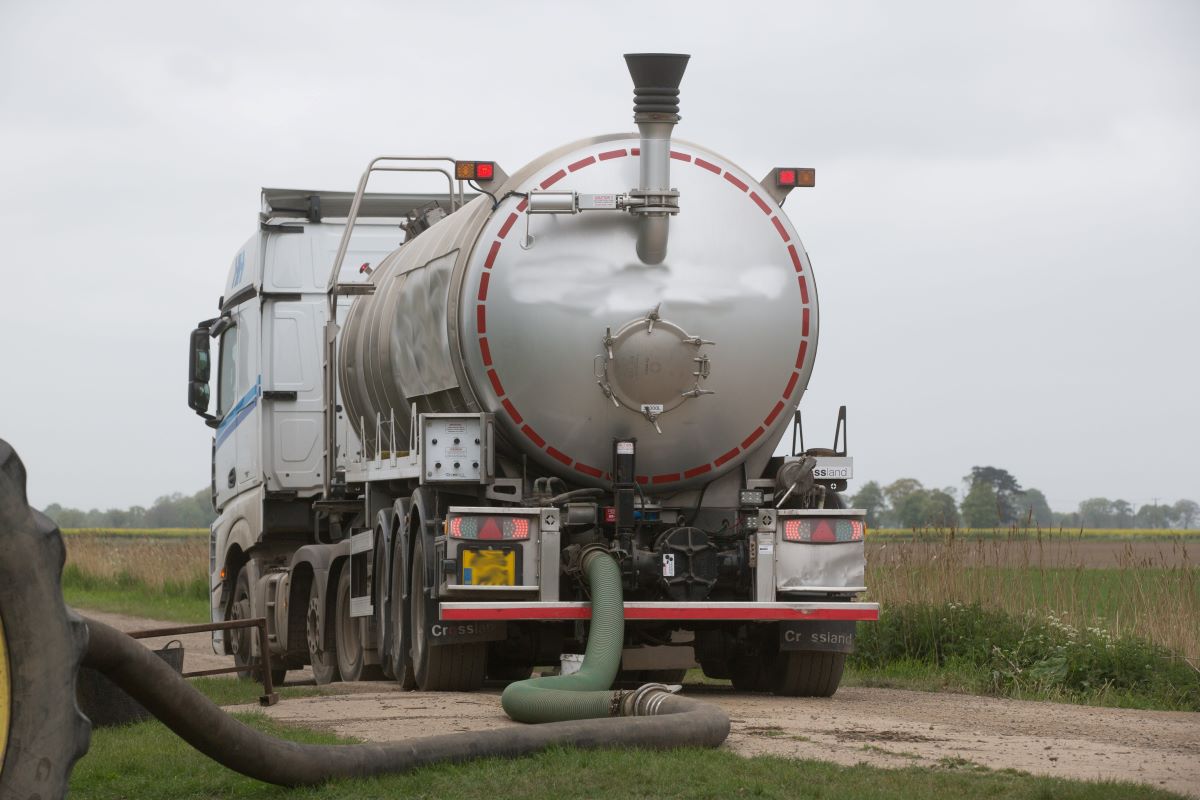
The tank or vessel into which the product is to be discharged must be large enough to accommodate the product being delivered without overfilling and in order to achieve this, the delivery driver must be able to see the quantity in the tank or vessel before and during the delivery. This can either be by means of a tank contents gauge or by the tank being transparent; it is not acceptable to climb on top of the tank to determine the contents and available space by means of a dip stick or other method unless it can be done safely.
A fixed delivery pipe must be provided to which the vehicle discharge pipe can be connected. In order to avoid the risk of muscular/skeletal injury from stooping or reaching, the fixed pipe should be located between waist and head height (0.5 – 1.5m). Under certain circumstances, it may be necessary for the feed supplier to provide additional lengths of pipe and fixings in order to enable the driver to complete the delivery safe, it is not acceptable for the driver to hold the delivery pipe during discharge.
The storage tank must be free from damage or corrosion which may affect its safety and which presents a risk of injury. This includes being securely fixed to ground or other permanent structure to prevent collapse/overturn. Any discharge valves and pumps associated with the product need to be positioned in such a way that they cannot be accidentally damaged by the delivery vehicle during delivery.
Where the material being delivered is covered by the oil storage regulations (or equivalents) the tank must be bunded.
Any vehicle carrying liquids should carry a spill kit and the driver must have received adequate training in relation to the environmental risks of the product being carried.
During discharge the tanker should be parked on firm level ground.
During a bulk liquid delivery, drivers should be able to remain in a safe place at the delivery point, and be able to promptly access the controls of the vehicle if required, at all times.
6 - Packaged Deliveries
6 - PACKAGED DELIVERIES
6.1 Site Access
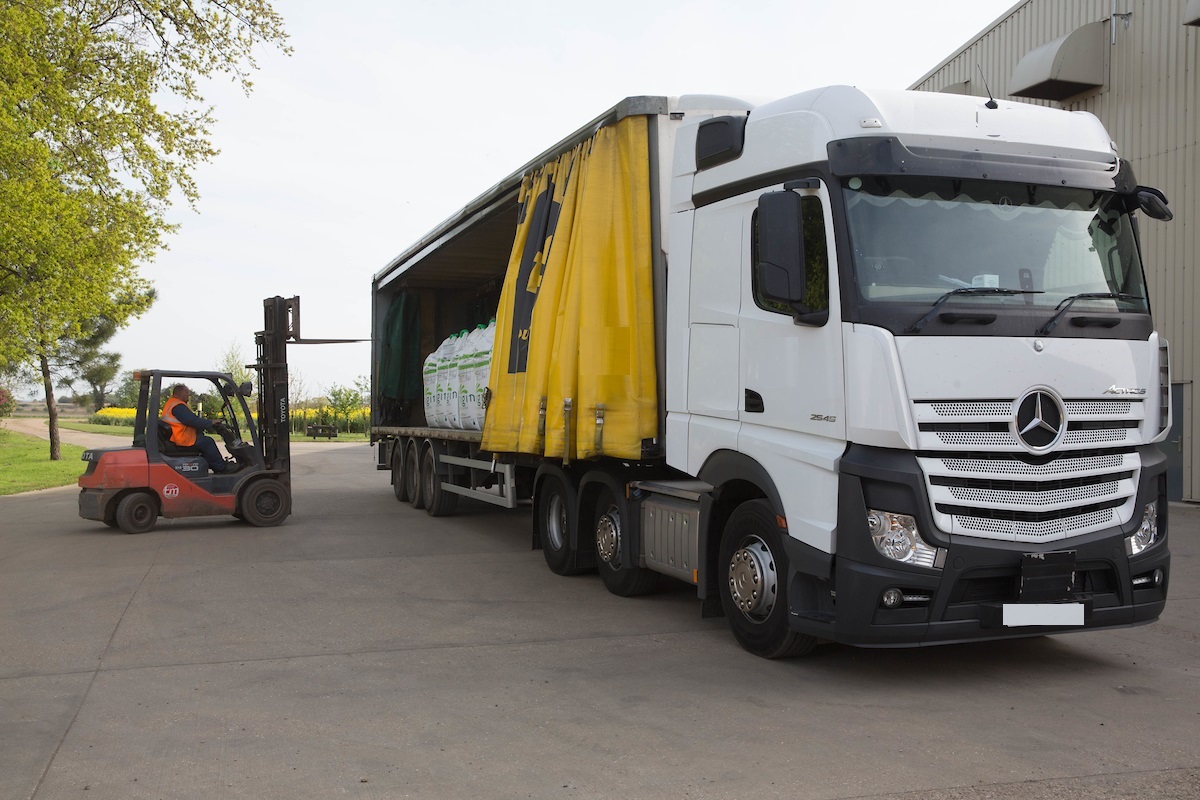
The same general principles listed in Section 2 apply for deliveries of bagged feed.
Vehicles must not be unloaded at the roadside as this would require the driver to work in the path of other road users. If unloading at the roadside is unavoidable, then this must only be done with appropriate control measures in place.
The curtain sided vehicles used to deliver bagged feed often require more headroom than a bulk vehicle, access to the site must not be restricted by overhead obstructions such as tree branches, or OHPL.
6.2 Unloading Vehicle Using a Vehicle Mounted Forklift truck
Many modern delivery vehicles carry a vehicle mounted forklift truck which eliminates the need to manually unload the packages. There must be adequate space for the forklift truck to be safely dismounted/remounted.
The forklift truck must be operated by a trained competent person only employed by the feed supplier or his appointed haulage contractor.
Unloading may be carried out using the vehicle mounted forklift truck or the customer may unload the delivery with their own equipment. In all cases there must be adequate space for the forklift truck driver/customer operator to safely manoeuvre the forklift truck around the vehicle whilst unloading.
Delivery drivers must not use customer’s forklift trucks and loading shovels unless they have received the correct formal training and authorisation for the specific equipment being used, and undertake the appropriate pre-use inspection.
If the customer is unloading the vehicle the delivery driver should not place himself at risk by standing or working in an unsafe position.
The ground surrounding the vehicle to be unloaded must be flat, level and firm. Operating a forklift truck on uneven or soft ground can result in an overturn if appropriate safety precautions are not followed.
The area where the vehicle is parked must be as close as is practical to the storage area in order to minimise the distance travelled by the forklift truck.
6.3 Manually Unloading Vehicles
If manual handling cannot be avoided, then arrangements must be made wherever possible to secure assistance for the driver at the delivery point, e.g. during the delivery planning process.
To reduce the risks of injury, during manually unloading a vehicle as far as is reasonably practicable, a manual handling risk assessment must be done using the HSE MAC Assessment tool where this is appropriate.
The risks associated with manual handling of packaged product will depend on the individual and the working environment, however as a guide, individual drivers must not be expected to manually unload packaged product deliveries of greater than two tonnes at any individual delivery point on any given day.
Anyone unloading a vehicle manually must have received training in the safe manual handling techniques appropriate to the nature of the goods being handled eg to enable them to safely handle bags, feed blocks, buckets etc.
When manually unloading, the route from the vehicle to the feed store must be:
- Minimised to avoid the risk of injury from manual handling.
- Free from obstructions e.g. steps, uneven ground which may cause slips, trips or manual handling injuries.
- Adequately lit, particularly when passing from daylight into buildings.
- Farmers receiving packaged products must ensure by careful planning that manual handling of bags is minimised both to themselves and the delivery driver and that wherever possible mechanical handling equipment is used to limit distances and weights carried.
7 - Reference & Other Relevant Guidance
HSE guidance:
Working safely near overhead electricity power lines – AIS8 (rev3)
http://www.hse.gov.uk/pubns/ais8.pdf
Avoidance of danger from overhead electricity power lines – GS6
http://www.hse.gov.uk/pubns/gs6.htm
Farmwise: Your Essential Guide to Health & Safety in Agriculture – INDG270
http://www.hse.gov.uk/pubns/books/hsg270.htm
Manual Handling (MH) Assessments (The MAC Tool) & Full MH Risk Assessment
http://www.hse.gov.uk/pubns/indg383.pdf
https://www.hse.gov.uk/pubns/ck5.pdf
For more information on workplace transport visit the HSE website at
http://www.hse.gov.uk/workplacetransport/publications.htm
Other publications/useful websites
AIC Biosecurity Guidance
ttps://www.agindustries.org.uk/asset/3EB02ACF-B83E-4622-89F2B1DA0E0889FF/
AIC/RHA Loading Transportation & Tipping Guidance – Nov 2008
https://www.agindustries.org.uk/resource/loading--transportation-and-tipping-guidance-rha.html
https://www.agindustries.org.uk/resource/tascc-loading-transportation-and-safe-tipping-guide.html
The Energy Networks Association ‘Look out, look up’ - guidance on safe working near OHPLs
http://www.energynetworks.org/
NFU Online
http://www.nfuonline.com/home/
Farm Safety Partnership
www.farmsafetypartnership.co.uk


